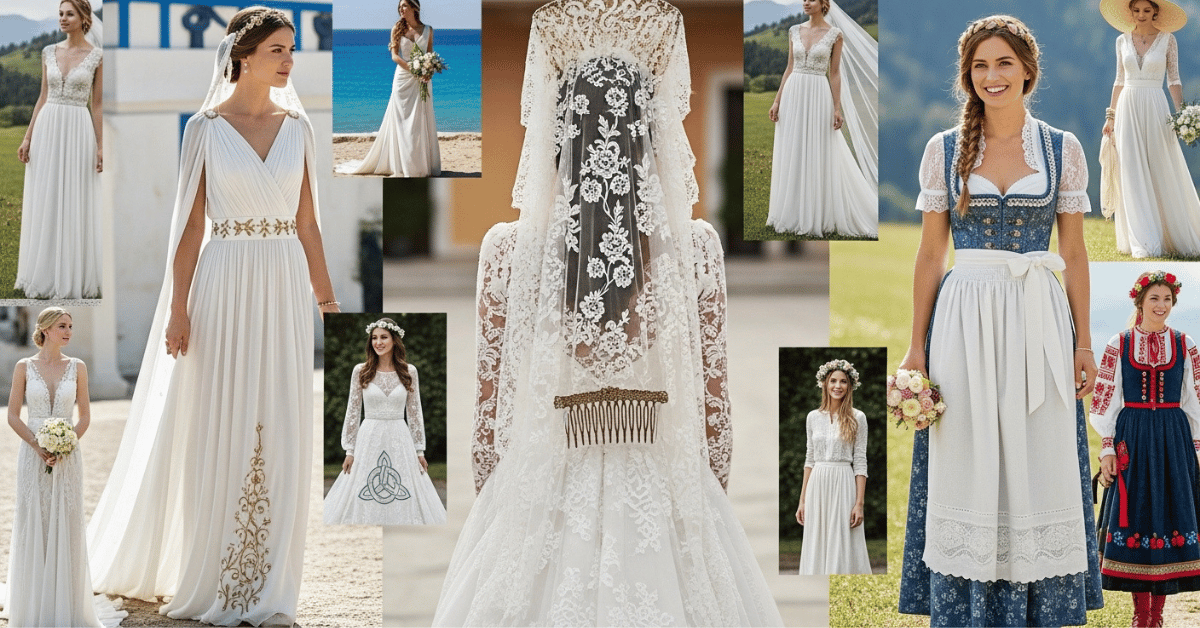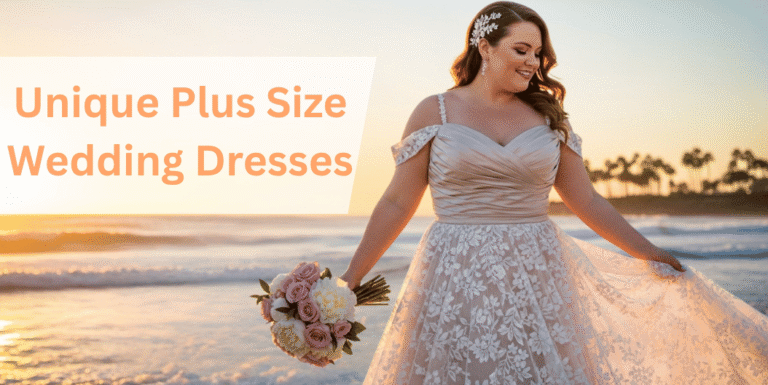European Wedding Dresses: Spanish Mantillas, Greek Gowns, Dirndls, and More
European weddings are rich with tradition, heritage, and elegance. From the delicate lace mantillas of Spain to the historical Dirndls of Germany and Austria, every region offers unique bridal attire that tells a story. These gowns are more than fashion—they reflect centuries of culture, ceremonial practices, and regional artistry.
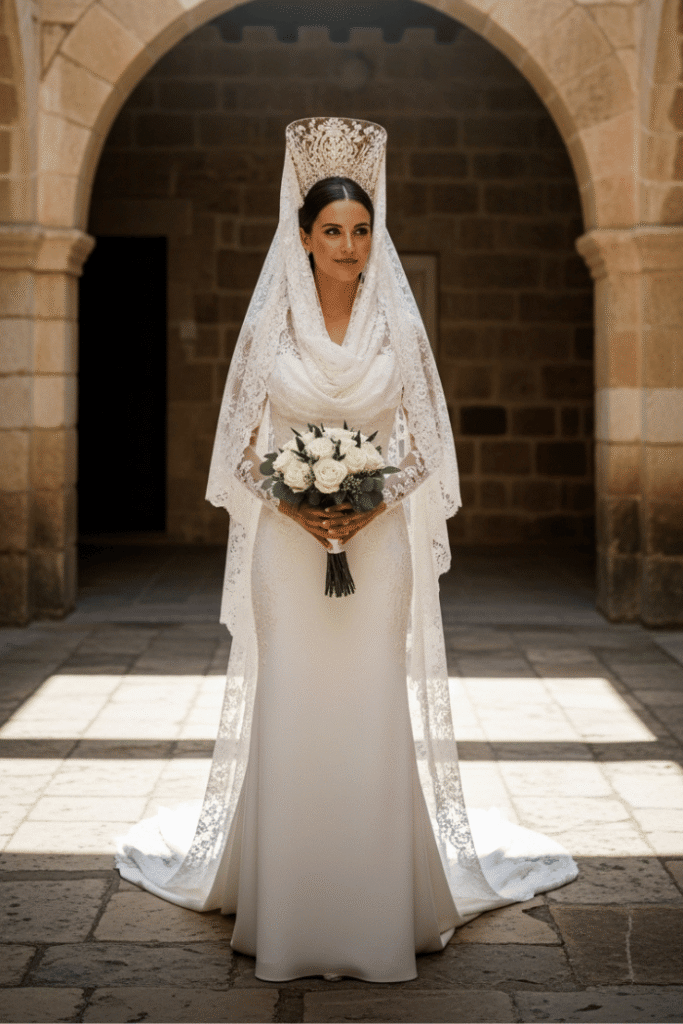
Table of Contents
- The Timeless Elegance of Spanish Mantillas
- Greek Wedding Gowns
- Bavarian and Austrian Charm
- Russian and Eastern European Gowns
- What Makes European Bridal Attire Unique
- Choosing the Perfect European Wedding Gown
- Why European Gowns Are More Than Just Dresses
- Making Your Wedding Unforgettable with European Styles
The Timeless Elegance of Spanish Mantillas
Spanish brides often choose the mantilla, a lace or silk veil draped over the head and shoulders, paired with a fitted dress. This gown exudes regal sophistication, blending historical fashion with contemporary bridal trends.
The mantilla is traditionally made of fine lace, sometimes hand-embroidered, and often comes with a peineta, a decorative comb that adds height and structure. Spanish mantillas carry cultural symbolism, representing modesty, grace, and respect for tradition. Brides wear them for both the church ceremony and formal wedding photos, ensuring a timeless silhouette.

Greek Wedding Gowns
Greek bridal attire often features flowing fabrics, draped designs, and delicate embroidery, reflecting both ancient and modern influences. White or ivory gowns are common, emphasizing purity and elegance, while subtle gold or silver accents symbolize prosperity and good fortune.
Greek gowns focus on comfort and movement, allowing brides to participate in long ceremonies and lively celebrations. Fabrics like silk, chiffon, and satin are popular, creating graceful drapes that echo classical Greek statues and traditional garments.
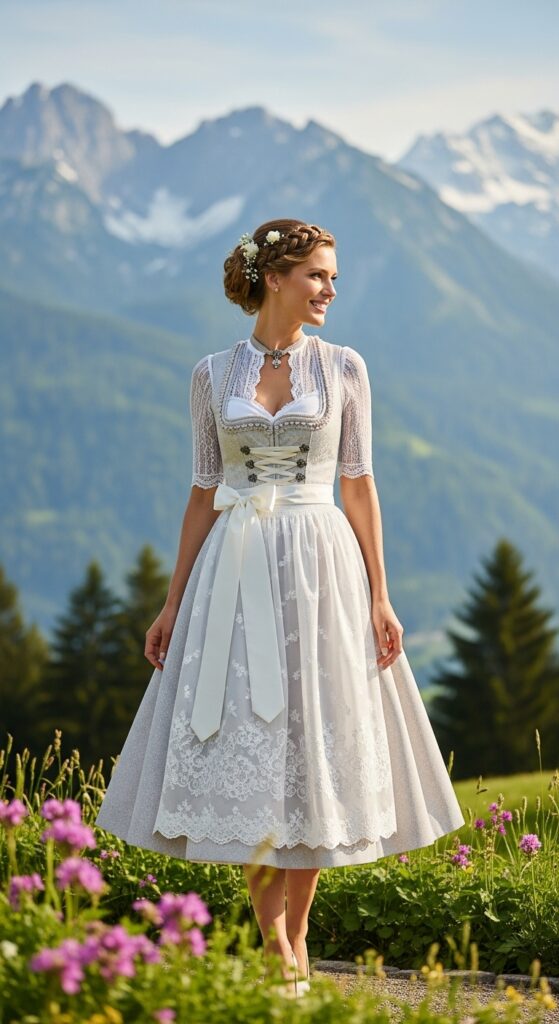
Bavarian and Austrian Charm
In Germany and Austria, the Dirndl represents a fusion of regional heritage and festive style. Originally a traditional peasant dress, the Dirndl has evolved into an elegant bridal gown featuring a fitted bodice, wide skirt, and apron.
Modern bridal Dirndls often incorporate luxurious fabrics, lace trims, and embroidered patterns. These dresses honor local history while allowing brides to celebrate their roots. The apron knot placement traditionally indicates marital status: tied on the left signals a single bride, while on the right means she is married or engaged.
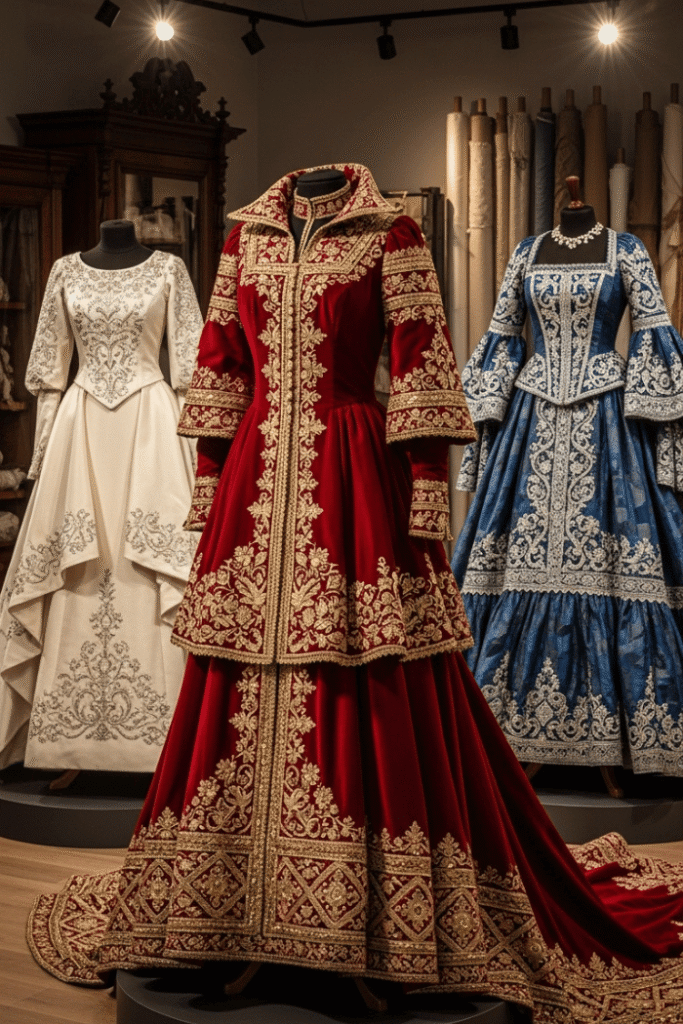
Russian and Eastern European Gowns
Russian and Eastern European brides frequently choose heavily embroidered gowns, long sleeves, and layered skirts, reflecting historical royal styles. Fabrics like velvet, satin, and brocade add richness, while intricate patterns showcase cultural symbolism.
Many Eastern European gowns include folk motifs, floral embroidery, or lace detailing that tells a story about the bride’s region. Accessories such as veils, kokoshniks (traditional headdresses), or sashes complete the ensemble, balancing tradition with contemporary bridal elegance.
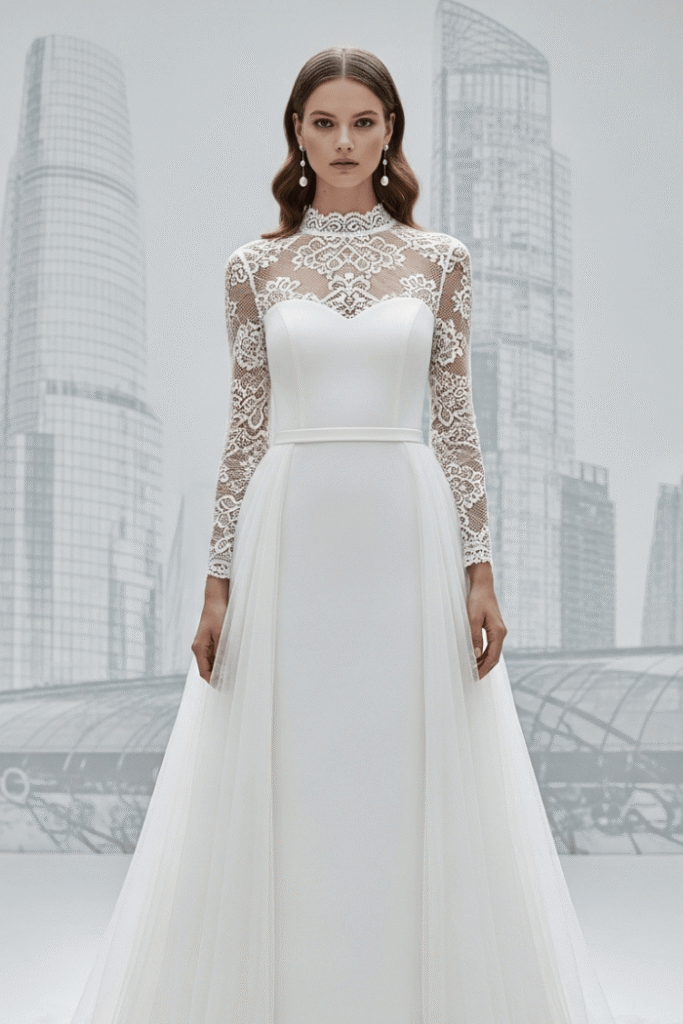
What Makes European Bridal Attire Unique
European wedding dresses stand out for their heritage-rich designs and ceremonial significance:
- Silhouettes: Flowing Greek drapes, fitted Spanish mantillas, or structured Dirndls highlight regional aesthetics.
- Fabrics: Lace, silk, satin, velvet, and brocade are chosen for their beauty, texture, and symbolic meaning.
- Cultural Symbolism: Each gown conveys local values, from modesty and fertility to status and tradition.
- Ceremonial Guidance: Accessories, headpieces, and embroidery often follow historical wedding rituals.
- Modern Adaptations: Contemporary brides may merge tradition with modern bridal trends, ensuring comfort and style.

Choosing the Perfect European Wedding Gown
When selecting a European-inspired gown, brides should consider cultural heritage, ceremony type, and personal style:
- Spanish Mantilla: Ideal for formal church weddings and classic photo opportunities.
- Greek Gown: Perfect for outdoor or destination weddings where movement and flow are essential.
- Dirndl: Suits traditional celebrations and emphasizes regional pride.
- Russian / Eastern European Gowns: Offer grandeur and historical elegance, perfect for formal events or winter weddings.

Why European Gowns Are More Than Just Dresses
European bridal gowns reflect centuries of tradition, artistry, and cultural identity. Every fold, embroidery, and fabric choice has a story, connecting modern brides with their heritage. Wearing one is a way to honour ancestral customs while celebrating personal milestones.
Making Your Wedding Unforgettable with European Styles
From the regal mantillas of Spain to the folk-inspired Dirndls and ornate Eastern European gowns, European bridal attire offers timeless elegance, rich symbolism, and heritage-driven artistry. Brides choosing these dresses not only look beautiful but also embrace centuries of culture, creating a wedding day that is both meaningful and memorable.

Sophia Lane is a dedicated bridal fashion writer and wedding style consultant with over a decade of experience in helping brides-to-be discover their dream gowns. With a background in fashion journalism and bridal styling, Sophia specialises in writing detailed, research-driven guides on wedding dress styles, fabrics, accessories, and bridal trends.
Her work blends in-depth fashion knowledge, cultural research, and practical advice, ensuring brides receive content that is both inspiring and actionable. She has studied wedding dress history across cultures, analysed emerging eco-friendly bridal trends, and regularly collaborates with designers to stay updated on the latest collections.
Expertise
-
Wedding dress styles, fabrics, and silhouettes
-
Body-shape based bridal styling (petite, plus size, tall, maternity)
-
Sustainable and eco-friendly bridal fashion
-
Bridal accessories, tailoring, and preservation techniques
-
Global cultural wedding attire traditions

